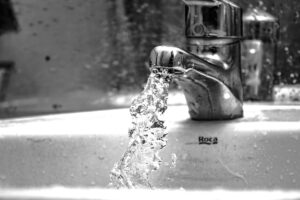Basement leaks can turn your cozy underground space into a damp, unusable mess. Water can seep through walls and floors, causing damage and leaving an unpleasant smell. If left unchecked, these leaks can lead to even bigger problems like structural damage or mould growth.
Having a dry basement starts with understanding the common causes of leaks. Sometimes it’s due to improper grading around your home, or maybe your gutters are not doing their job. Once you know the source, you can take steps to fix it and prevent future leaks from happening.
You can protect your basement with the right waterproofing methods and regular maintenance. Simple actions like keeping your gutters clean and inspecting for cracks can go a long way. With a bit of effort and the right know-how, you can keep your basement dry and comfortable all year round.
Identify the Causes of Basement Leaks
Knowing what causes basement leaks can help you fix them. Water can get into basements through tiny cracks, gaps, or even the floor. Here are some common reasons why basements leak:
- Poor Grading: If the ground around your house doesn’t slope away, water can pool next to the walls. This water seeps into small openings, leading to leaks inside.
- Clogged Gutters and Downspouts: Gutters and downspouts should direct water away from your home. If clogged, they can cause water to overflow, collecting near the foundation and eventually leaking into the basement.
- Cracks in Walls or Floors: Over time, cracks can develop in basement walls or floors. These cracks allow water to trickle in, especially after heavy rain.
- Hydrostatic Pressure: This is the pressure exerted by standing water in the soil. When the pressure builds up, it can force water through the foundation and into your basement.
- Leaky Windows: Basement windows that aren’t properly sealed can let in water during storms or when snow melts.
- Old Waterproofing Materials: Waterproofing methods can break down over time. If your basement walls aren’t sealed well anymore, water will find its way inside.
Finding out what causes the leaks is a critical first step. Once you zero in on the problem, you can choose the right solution to make your basement dry and safe.
Waterproof Your Basement Correctly
Waterproofing your basement involves taking several steps to make sure water stays out. With proper methods in place, you can prevent leaks and protect your space. Here’s how you can waterproof your basement effectively:
- Seal Cracks and Gaps: Use waterproof sealants to fill any cracks in the walls and floors. This keeps water from getting in through small openings.
- Install a Sump Pump: A sump pump can help control water levels, especially if your basement often floods. It pumps water away from your home, keeping the basement dry.
- Apply Waterproof Paint or Sealant: Coating the walls and floors with waterproof paint can add an extra layer of protection against moisture.
- Exterior Waterproofing Membrane: For a long-lasting solution, consider applying a waterproof membrane on the outside of your basement walls. This provides a barrier between the soil and your home.
- Add Window Well Covers: Covering your basement windows keeps out rain and debris. Clear covers allow light in while keeping the wet weather out.
- Install Interior Drainage Channels: These channels, installed at the base of the walls, direct water to the sump pump, preventing it from pooling on the floor.
By waterproofing your basement, you create a space that stays dry and usable. Taking these measures not only stops current leaks but also prevents future water issues from damaging your home.
Regular Maintenance and Inspections
Maintaining your basement is key to keeping leaks at bay. Regular inspections and upkeep will help catch problems early and prevent costly damage. Here are some steps you can take to maintain your basement effectively:
- Check for Cracks: Every few months, look over the basement walls and floors for new or growing cracks. Seal them immediately to keep water out.
- Clean Gutters and Downspouts: Make it a habit to clean your gutters and downspouts regularly. Ensure they direct water away from your home properly.
- Inspect Sump Pump Functionality: If you have a sump pump, test it biannually to make sure it’s functional. Pour some water into the pit and see if it pumps the water out.
- Look for Signs of Mould: Keep an eye out for mouldy smells or stains, which can indicate moisture problems. Address any signs right away.
- Check Window Seals: Regularly inspect basement windows for signs of wear. Reseal or replace them if needed to prevent leaks.
- Review Landscaping: Ensure the ground around your home slopes away and hasn’t shifted. Adjusting the grading can divert rainwater away from your basement.
By performing these simple checks, you can keep your basement dry and avoid major problems. Staying on top of maintenance will protect the space for years to come.
Implement Smart Drainage Solutions
Proper drainage systems are crucial for preventing basement leaks. They help manage water flow around your home and divert it away from the foundation. Consider these smart drainage solutions to stop leaks effectively:
- French Drains: Install French drains around the perimeter of your basement. These underground pipes redirect groundwater away from your foundation.
- Exterior Drain Tiles: These tiles are placed at the basement footings and connected to a sump pump or drainage outlet, channeling water away from your home.
- Gutter Extensions: Extend downspouts to discharge water at least several feet away from your house. This prevents pooling and directs water far from the foundation.
- Gravel Beds: Surround your home with gravel beds to enhance drainage. They allow water to easily flow away from your house instead of soaking into the foundation.
- Dry Wells: These are underground systems that collect and slowly release water into the soil, preventing large puddles around your house during heavy rains.
- Swales: Create shallow ditches, or swales, to divert water around your property. They guide water away naturally without much intervention.
Installing these drainage solutions can greatly reduce the risk of basement leaks. A well-designed system goes a long way to keeping your home safe and dry.
Conclusion
Stopping basement leaks involves understanding their causes, implementing effective waterproofing strategies, and keeping up with regular maintenance. With a proactive approach, homeowners can protect their basements from leaks and moisture problems. By addressing issues promptly and investing in smart drainage solutions, you can ensure your basement remains a useful and comfortable part of your home.
When leaks cause stress or the job feels overwhelming, Hayes Plumbing is here to help. We bring years of experience in tackling basement leaks and providing top-notch plumbing solutions. Contact us today to learn how our plumbers in Oshawa, Ontario, can keep your home dry and your basement in perfect condition. Let us take the guesswork out of basement waterproofing for you.



